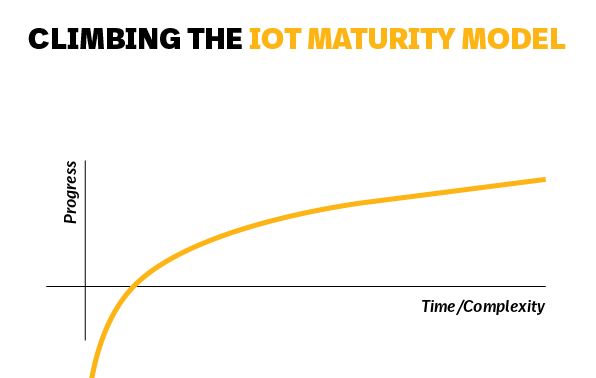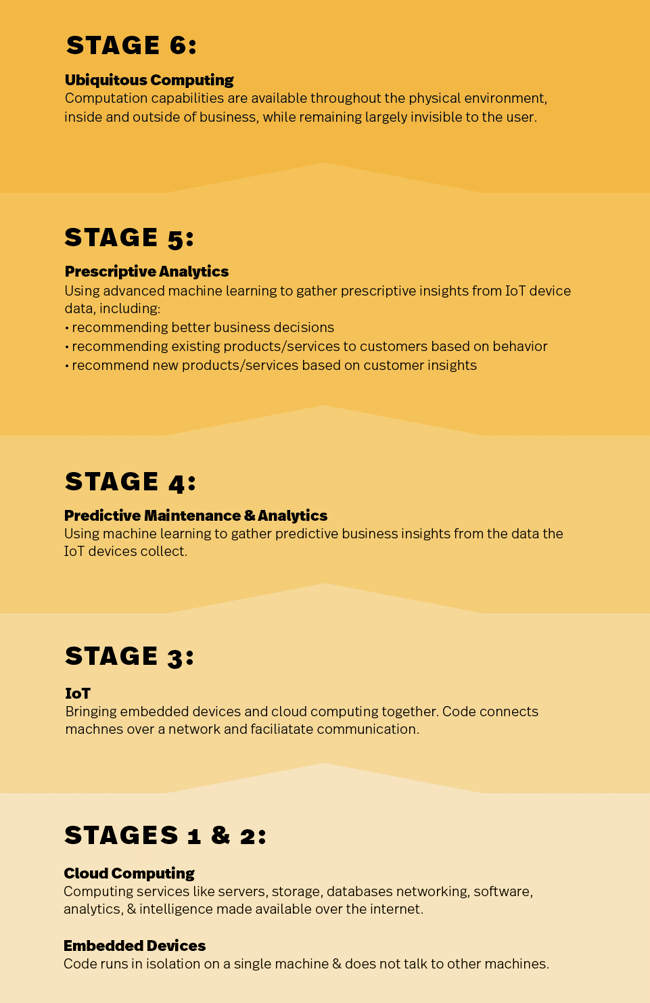BLOG
What is the Average Cost of IoT Product Development?
Whether you have a vision for a truly innovative internet of things (IoT) device or you’re looking to add connectivity to an existing product, it’s going to take significant investment of non-recurring engineering (NRE) dollars to turn that idea into a reality.
While some IoT product development partners take a fixed-fee approach to development, we’ve found that this method critically underestimates the inherent complexity of IoT projects and can create career-derailing headaches in the long run. Fixed-fee contracts have a feature-by-feature delivery mechanism that incentivizes teams to pop out features – but that doesn’t lead to a high-quality overall product. Very, instead, uses a time and materials approach to IoT development.
In this article, we’ll break down some of the factors we use to estimate costs for our clients’ IoT initiatives.
Why Are IoT Projects So Complex?

At a high level, building IoT solutions is a more complex endeavor than your typical software or hardware project because IoT itself encompasses such a wide range of technologies that must interact almost seamlessly to deliver compelling results.
While most people think of full stack development as both front-end and back-end for web development, IoT engineering entails an even fuller stack. This spans mechanical, electrical, and firmware engineering at the thing-end, back-end and data science at the cloud-end, software at the front-end, and networking and connectivity to tie it all together.
This means that at each point in the development process, every choice you and your development team makes has more downstream implications than you might usually expect on a project that doesn’t involve as many intertwining technical disciplines.
And here’s the truth of the matter: no one person can achieve the Ph.D. – level mastery of all the disciplines required to deliver functional, secure, scalable solutions at every stage. That means that in addition to having Ph.D.-level experts in every subdomain on your IoT engineering team, every team member must also have basic competency in every area where they’re not an expert as well.
Top Factors to Consider for IoT Cost Calculations
1. Level of Innovation

As you’re looking to engage an outside firm, think about where you stand on the IoT Maturity Model. Are you stapling connectivity onto a product you already sell, or are you designing and developing a first-of-its-kind product for your business? Does the product need to interface with your current infrastructure, or do you need to build a new IoT system from scratch?
Another important piece to note here: you will likely save on costs and accelerate your time to market by working with the smallest possible number of design/development firms.
This goes back to the interconnected nature of IoT projects described above – if you’ve got one shop doing your firmware, one handling app development, and another for hardware, the probability of miscommunication rises. You might end up with firmware written for an out-of-date hardware design because the teams weren’t collaborating efficiently.
2. Which Features Your Product Actually Needs

One of the first things we do on any IoT project is ask: which features are essential for your product to function as intended for your chosen audience? This applies to both net-new devices and existing products you’re looking to connect.
For example, does your product actually need a mobile app, or can you design your hardware to provide the functionality your users need to avoid IoT app fatigue? Alternatively, adding a mobile app could be a great choice if you have a solid plan to use it to generate recurring revenue for your product, like adding a subscription service to a smart home device.
With artificial intelligence solutions dominating news cycles and likely the minds of some of your stakeholders, many clients are interested in our machine learning (ML) services. While ML can be a great addition because it opens the door to generating recurring revenue, building out data pipelines and training models is a significant investment. This is especially true if you want to run these models at the edge.
3. Potential Cost-Efficient Tradeoffs

Once you’ve decided the must-have features for your minimum marketable product (MMP), you can get into discussions about cost-saving tradeoffs. Off-the-shelf hardware will almost always prove cheaper than building custom, for example, but you may have to make sacrifices on certain features or hardware design.
You can also look at things like integration points, which can easily drive up the cost of an IoT project. Not only do more third-party integrations add costs, but the quality of their APIs can be a huge sticking point.
If your development team can easily interface with the databases in your on-prem infrastructure, for example, the project will move much more quickly than if they have to do a lot of extra work, like migrations or setting up the scaffolding necessary to get the various pieces of the system to talk to each other.
4. Certifications and Compliance

Lastly, you also need to think about certifications and compliance. It may be tempting to leave this step until the very end of your project, but we can’t emphasize enough that we don’t recommend this. You will save significant time and money by considering ahead of time which compliance tests will apply to your product. That way, you can design and develop the product to meet those standards, instead of trying to retrofit something as immutable as custom hardware after the fact.
At Very, we follow best practices for compliance, such as pre-compliance testing, but stricter requirements almost always translate to higher costs compared to a product with less strict requirements. A medical device that needs to comply with HIPAA is a prime example. We’ll have to devote more time to information governance (IG) and cybersecurity to keep patients’ private health records safe.
How We Optimize Costs for IoT Initiatives
As IoT development experts, we’ve developed methodologies and best practices to reduce the cost of your project as much as possible while still providing you with the high level of quality you’re expecting.
It all starts with a Technical Design Sprint where we work to mitigate potential risks, followed by an Agile IoT development process. Compared to a traditional Waterfall methodology, Agile uses short development sprints to quickly create a working product that we then iterate upon.
For example, rapid prototyping with dev kits and 3D printers let us create mockups of our hardware much faster, which then unblocks downstream development on firmware, software, and data science. The result is that our teams can figure out what’s working, what’s not, and how they need to adapt to de-risk the project.
As with any technology, there will always be times when we need to rethink assumptions, update plans, or rethink features. Agile lets us do this much more efficiently.
Our teams will leverage their experience and expertise, but the last piece of the puzzle depends on you. Open and regular communication is key to a successful project. This includes sitting down with you at the initialization phases in order to make sure that we’re 100% on the same page, as well as regular calls and updates. The more you put into this process, the more you’ll get out of it.











